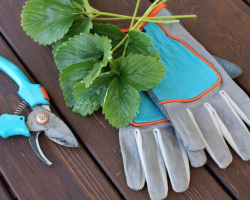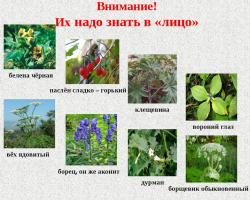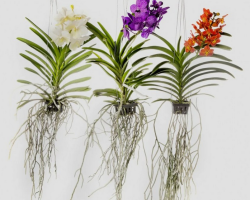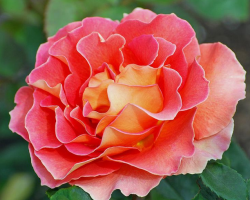Inexperienced gardeners make one error - do not take into account the climate of the region when various plants are planted. Some species do not tolerate frosts, so they may not survive the winter.
Content
Therefore, you need to decide on the climatic zones of Russia and the CIS countries. Read more about them in this article.
Climate zones of frost resistance of plants
- USDA zones are presented in the form of geographical regions that are zoned on the basis of average low temperatures. This is a restriction factor when decorative or fruit and berry crops are grown. Some gardeners consider such a division subjective. It should be noted that the exact system is still absent.
- The division system into climatic zones for plants was developed by the US Department of Agriculture. Today it is considered universal, therefore it is used by gardeners from around the world.

During the division, such factors were taken into account:
- minimum air temperature (the values \u200b\u200bare taken as a basis over the past 5-7 years);
- how close the ocean is;
- how cold and warm currents affect the climate;
- what is the relief in the region;
- are there any underground hot springs;
- winding protection;
- the presence of plant biocenosis.
Plant climatic zones: how to use the table correctly?
To make gardeners more conveniently determine the climatic zone of frost resistance for plants, a special table or map is provided. It was updated in 2012, because the climate of the planet has changed a bit. In total, 13 zones are provided in the world. Russia is located on the territory of 0-9 zones. Often, each of them is divided into two subzones - a and b. The marginal temperatures vary in the range of 2-3 ° C.
The main zones of Russia and the CIS countries:
- the first is the center of Siberia;
- the second is the south of Siberia;
- the third is the Urals and the east of Siberia;
- the fourth is the Moscow region and most of the center of Russia;
- fifth - Moscow, St. Petersburg region, Vladivostok, Baltic states, Minsk, Kyiv and the Center of Ukraine;
- the sixth - the Caucasus, Krasnodar, Crimea, the West and South of Ukraine, the East and the Center of Poland, the Czech Republic;
- seventh - the southern coast of Crimea;
- the eighth - Dagestan;
- ninth - Sochi.
This is not to say that you cannot grow plants from another zone in your region. For example, in the territory of the Moscow and St. Petersburg region, you can grow crops suitable for the first and fourth zone. However, in a cooler region, you need to cover the plants for the winter, conduct mulching, etc.
When you purchase a plant in a nursery, carefully study the information indicated on the tag. Often it indicates in which zone it is necessary to land.

You can find a map of frost resistance zones, which is divided into shades. It should be noted that the purchase of English seedlings is fraught with the presence of another marking:
- H1a (above +15 ° C) - cultivation is carried out in a greenhouse;
- H1b (from +10 ° C to +15 ° C) - in the summer you can plant in open ground;
- H1c (from +5 ° C to +10 ° C) - an identical characteristic with H1b;
- H2 (from +1 ° C to +5 ° C) - plants can transfer light cooling, however, frosts are destructive;
- H3 (from -5 ° C to +1 ° C) -cultures grow well in the coastal regions of England;
- H4 (from -10 ° C to -5 ° C) -can grow in almost all regions of Great Britain;
- H5 (from -15 ° C to -10 ° C) -can withstand small frosts in winter;
- H6 (from -20 ° C to -15 ° C) -plants can grow in all regions of Northern Europe;
- H7 (-20 ° C or less) are the most frost-resistant plants.
It should be noted that such divisions are estimated. After all, the climate can change annually, and the air temperature is not always constant.
Climate zones for plants: a scale of stability to frost
Frost resistance can be divided on a certain scale that A. Kolesnikov developed. It has a ball system, namely:
- 1 point. The temperature is below -50 ° C. Cultures are considered the most frost -resistant.
- 2 points. Temperature from -25 ° C to -35 ° C. These are frost -resistant crops.
- 3 points. Temperature from -15 ° C to -25 ° C. Cultures are moderately frost -resistant.
- 4 points. From -10 ° C to -15 ° C. These are not frost -resistant plants.
- 5 points. Temperature up to -10 ° C. Plants are considered the least frost -resistant.

In the territory of botanical gardens, the methods of Lapin and Sydneva adhere to:
- 1 point suggests that culture does not freeze;
- 2 points indicate that freezing appears only in half of annual shoots;
- 3 points say that annual shoots freeze completely;
- 4 points indicate that not only two -year, but also old shoots freeze;
- 5 points indicate that the crown is freezing to the level of a snowdrift;
- 6 points are an indicator that the entire ground part freezes;
- 7 points indicate that the plant will completely freeze.
Scientists were very actively involved in this issue, so they decided to distinguish between 2 common concepts - frost resistance and winter hardiness. The first concept determines how well the plants withstand low temperatures. The death of culture does not always provoke cold, there may be other factors, among which:
- sharp change in air temperature;
- long thaw, and thawing snow in winter;
- microclimate indicators;
- dry and cold wind;
- northern slopes;
- violation in care;
- a lack of moisture in the fall;
- clay soil;
- severe frosts with a lack of snow in winter;
- return of frosts;
- development of diseases.
Under the influence of the above indicators, plants may come across:
- With a break. This happens if winter is warm, and a lot of snow.
- With a breakdown. When the snow melts greatly and the thaw lasts a long time, water will accumulate on the surface. It does not allow oxygen to penetrate inside, which is why the culture is dying.
- With death due to ice crust. This is due to the fact that the thaw alternates with severe frosts.
- With the baked and cracking of the root system. This happens if there is no snow in the fall, but frosts have already appeared. The cause may also be a lack of moisture or thaw.
It is almost impossible to take into account all factors. Therefore, at the very beginning, you need to determine the climatic zone for plants and points of resistance to frost. Also specify in advance how culture transfers other adverse factors.
How to increase the frost resistance of plants, given the climatic zone?
Often gardeners are decided to plant plants that are not suitable for their climatic zone. This does not mean that they will die. There are several secrets that allow you to slightly increase the frost resistance of culture. However, be prepared that some events are not always successful. If you live in the 2B zone, and you want to plant a plant suitable for the 8A zone, this is impossible to do. The difference in several points is permissible.

You can increase frost resistance with the following measures:
- Mulch the basic part. Take advantage of the spruce for this, fallen dry leaves, wood sawdust or peat. You can also use industrial covering material.
- Before winter, you need to make fertilizers under the root, consisting of potassium and phosphorus. This will increase endurance and resistance to frost.
- Fuck the tree trunk in the fall to protect the bark from cracks.
- To increase the tone of plants in the fall, water them abundantly.
- Add to the soil sand and compostto improve the structure of the soil. Sour substrates need to be limited.
- Carry out forming and sanitary pruning so that plant juices are not spent on extra branches.
- Organize barriers that will delay snow next to the bushes.
- Carry into fungicides and insecticides to prevent diseases.
Now you know what climate zones of frost resistance to plants are available. It is important to select those crops that are recommended for planting in your region. This allows you to facilitate care for them, as well as increase the probability of survival.
Useful articles on the site:
- Acclimatization of an adult and child
- How many years does a birch tree live depending on the species and climate
- The deepest sea on earth
- The highest peak of the world Everest
- 7 climatic zones of planet Earth







